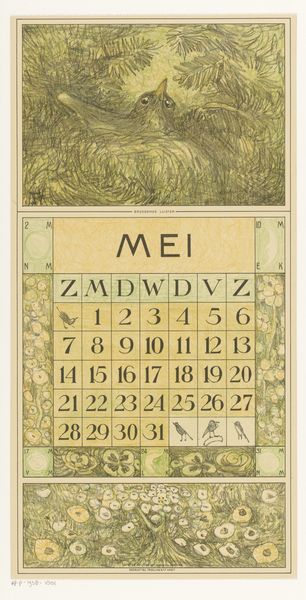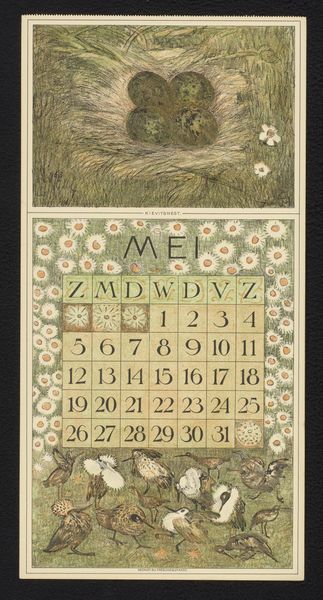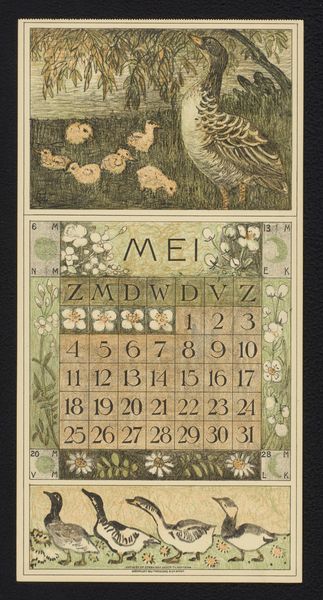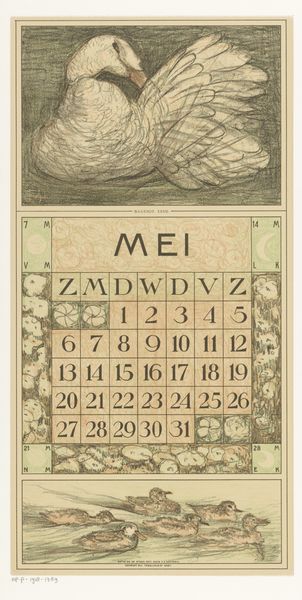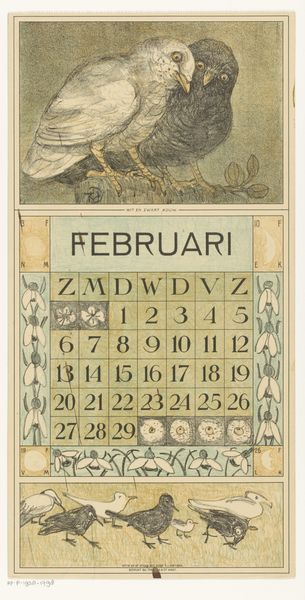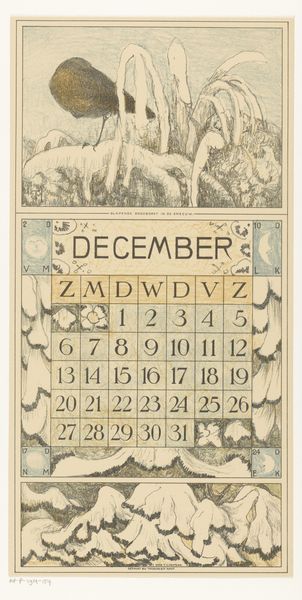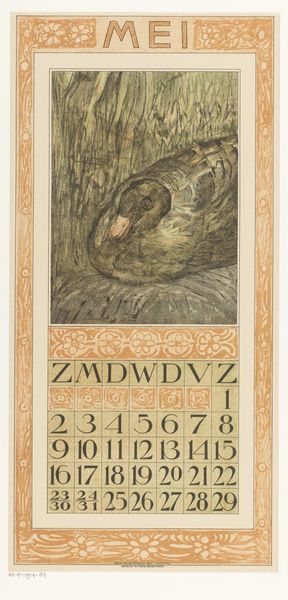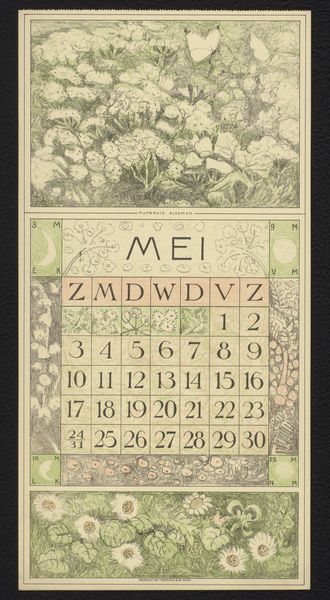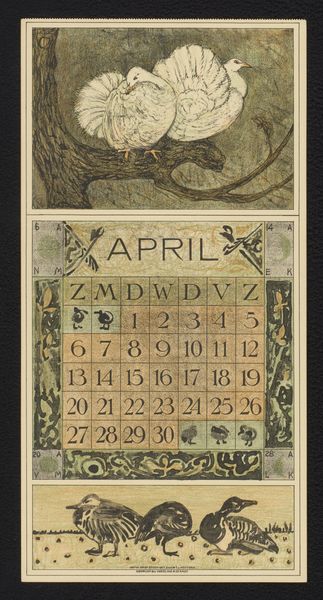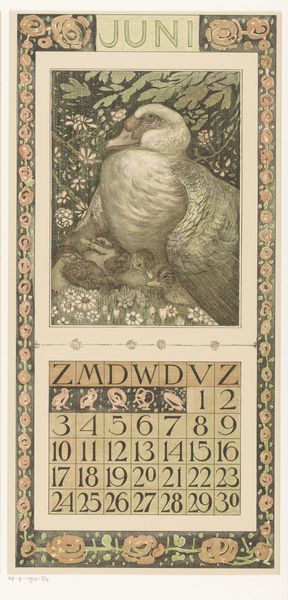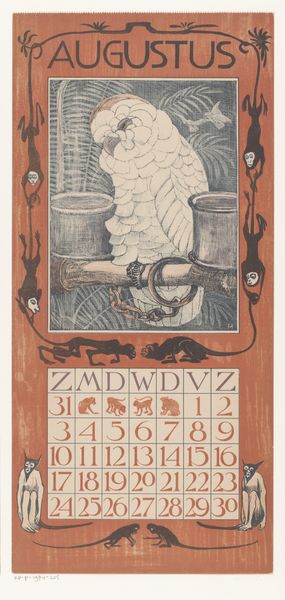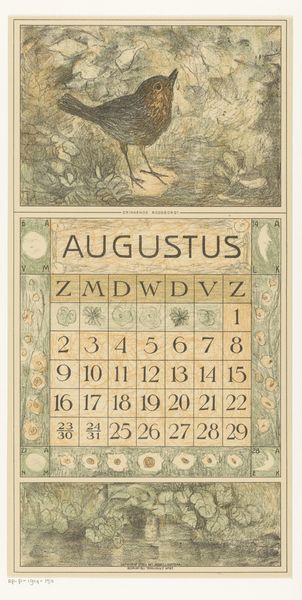
drawing, print, paper, watercolor
#
drawing
#
art-nouveau
# print
#
landscape
#
paper
#
watercolor
#
watercolour illustration
#
botanical art
Dimensions: height 420 mm, width 210 mm
Copyright: Rijks Museum: Open Domain
Curator: The work before us is a calendar sheet for the month of May, created by Theo van Hoytema in 1914. It’s a print on paper, utilizing both drawing and watercolor. Editor: It feels like a very ornamental object. A whimsical practicality is how I'd sum up my initial reaction to the design—simultaneously functional and utterly charming. Curator: Absolutely, and Hoytema often imbued his work with symbolic meaning drawn from nature. Notice the peacocks— one up top with what appears to be flowers in its beak, and another down below. Throughout history, peacocks are emblems of pride and beauty but in Christianity can also represent resurrection. Editor: That peacock's cry at the top feels particularly charged. Given the work's creation date of 1914, the sound and symbol of that peacock could have been seen as both an expression of beauty in the face of the encroaching war and a harbinger of darker things to come. Curator: Indeed, placing this delicate, almost fairytale-like image against the backdrop of World War I sharpens its edges. Also consider the smaller avian figures flanking the calendar grid; those simple shapes evoke both the fragility and resilience of life cycles. The moon phases in the corners of the calendar suggest not only change but guidance, hinting at the passage of time while reminding us of how each individual month nests within broader continuums. Editor: Right. The peacock also exists in some South Asian art as a vehicle for certain deities, representing good fortune and, sometimes, a warning. In art nouveau, animals are not just themselves but allegories of a larger social or emotional order. To me, it speaks of a cultural yearning for a time of peace and prosperity. Hoytema’s image operates as an act of hopeful resistance against forces trying to grind the world into brutality. Curator: Yes, even something as quotidian as a calendar page carries within it these potent layers of meaning. Editor: I came here looking for history and politics and, now, leaving with a better understanding of personal and collective memory. Curator: And perhaps the enduring need for symbols that guide and console us.
Comments
No comments
Be the first to comment and join the conversation on the ultimate creative platform.
